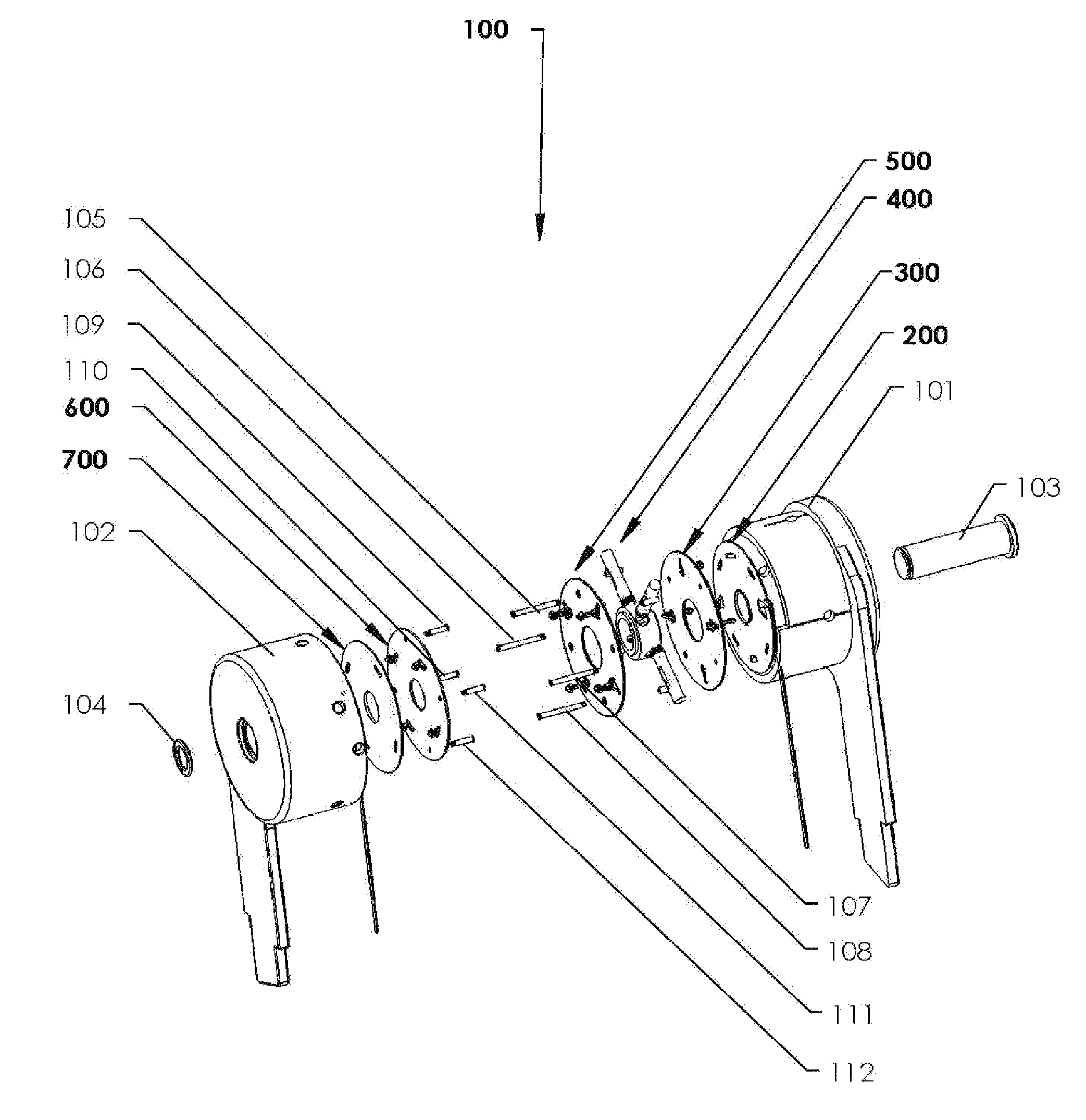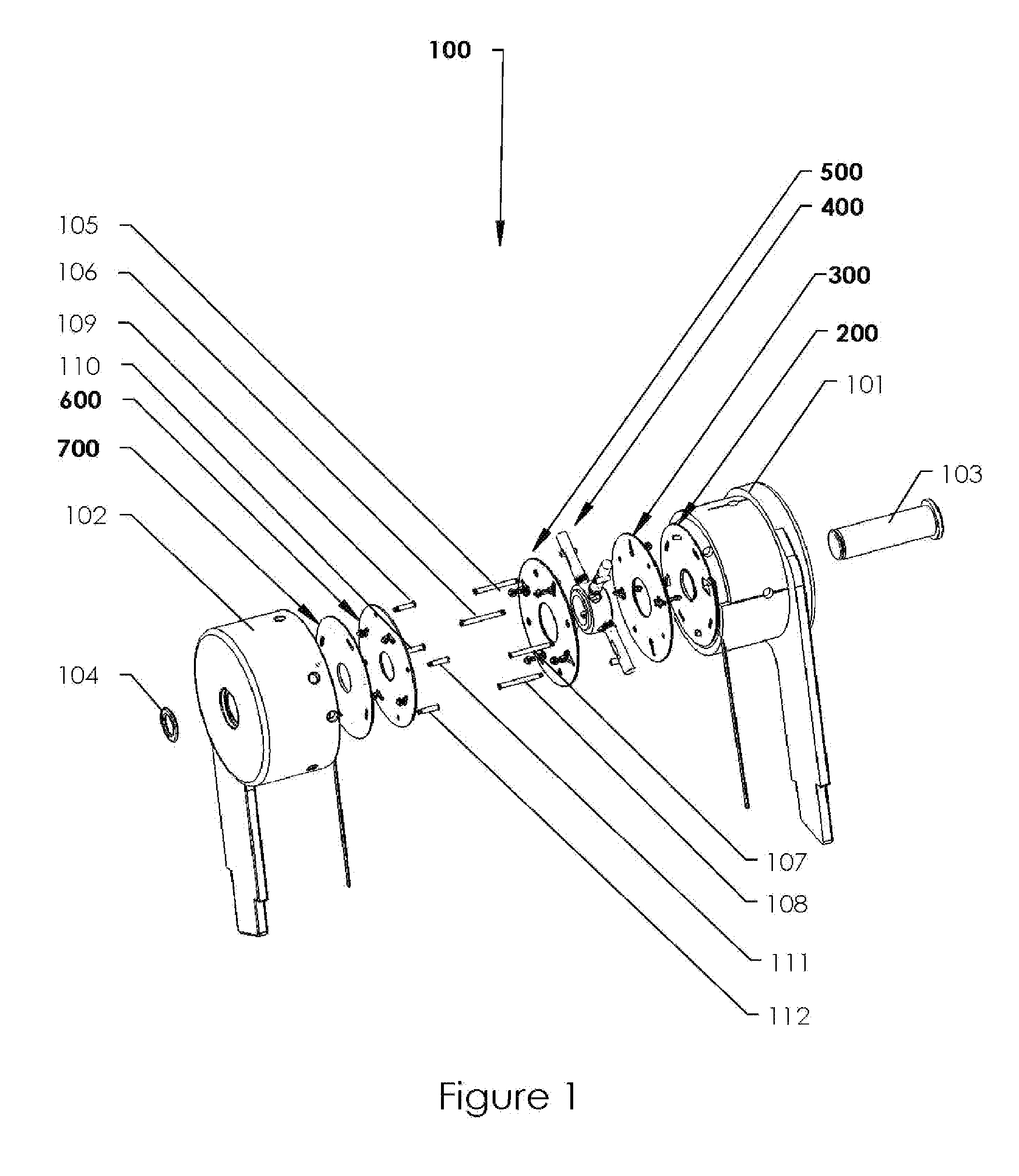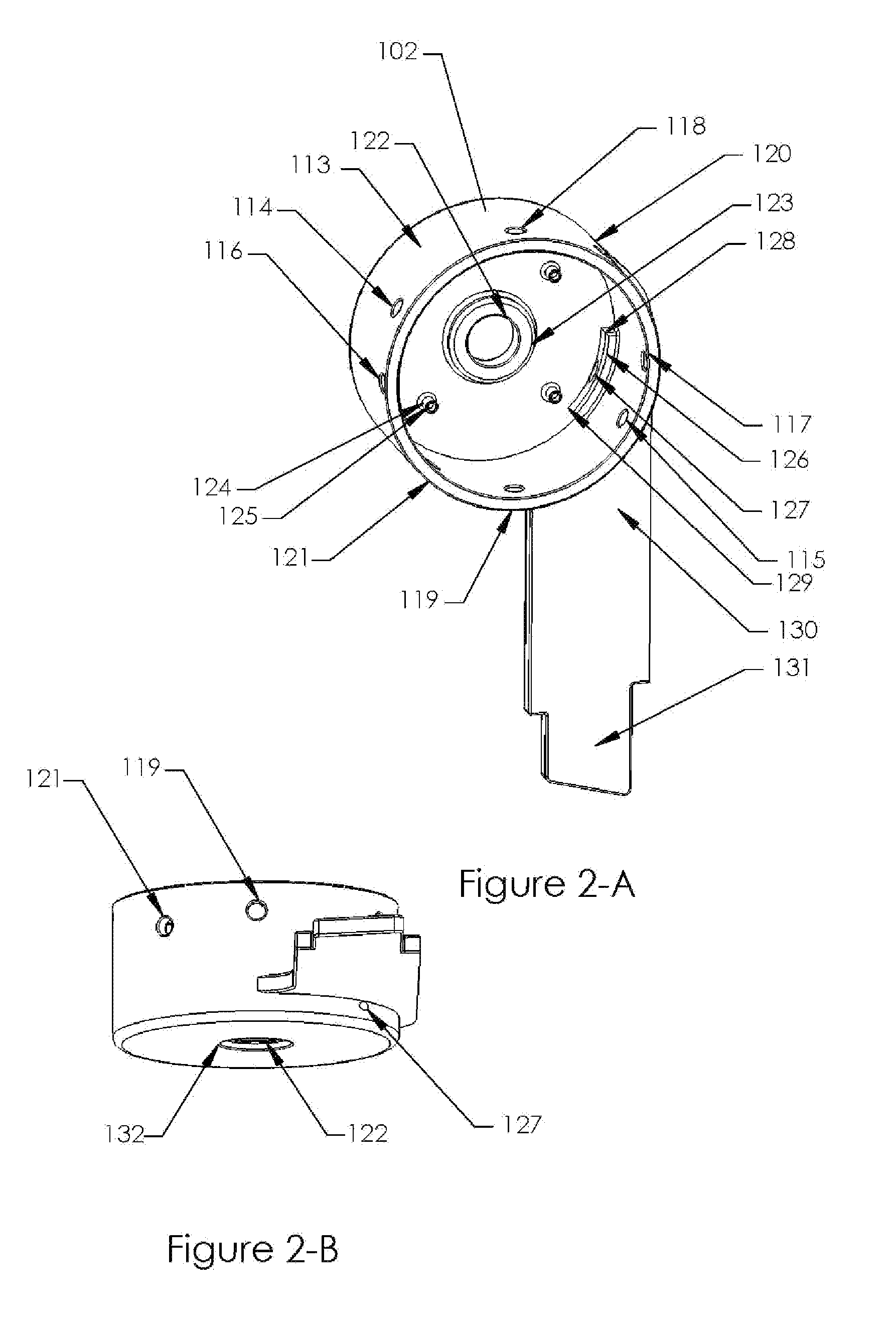Multi-Positional Articulating Hinge with Internal Stops and Remote Actuation and Methods for Manufacturing the Same
a multi-position, hinge technology, applied in the direction of manufacturing tools, scaffold accessories, building scaffolds, etc., can solve the problems of prior art hinges having to be actuated, the problem of the most pronounced problem, and the problem of articulating step ladders
- Summary
- Abstract
- Description
- Claims
- Application Information
AI Technical Summary
Benefits of technology
Problems solved by technology
Method used
Image
Examples
Embodiment Construction
[0045]Embodiments of the invention may be best understood by reference to the drawings wherein like parts have like numerals throughout. Although the embodiments and method of manufacture of the present invention discussed herein are discussed with respect to an articulating hinge, it will be appreciated that the structure and method of manufacturing disclosed may be applied to other products employing pivoting indexing devices such as scaffolding or collapsible landing gear for airplanes and helicopters and the like.
[0046]Embodiments of the present invention are directed to articulating indexing hinges manufactured from steel, aluminum or high tensile polymeric resins / plastics and the like. The choice of the particular materials employed may be influenced by a variety of traditional factors such as production costs and material availability. For example, in recent years our national community has become aware of the need to preserve our natural resources. Recycling of plastics, gla...
PUM
 Login to View More
Login to View More Abstract
Description
Claims
Application Information
 Login to View More
Login to View More - R&D
- Intellectual Property
- Life Sciences
- Materials
- Tech Scout
- Unparalleled Data Quality
- Higher Quality Content
- 60% Fewer Hallucinations
Browse by: Latest US Patents, China's latest patents, Technical Efficacy Thesaurus, Application Domain, Technology Topic, Popular Technical Reports.
© 2025 PatSnap. All rights reserved.Legal|Privacy policy|Modern Slavery Act Transparency Statement|Sitemap|About US| Contact US: help@patsnap.com



